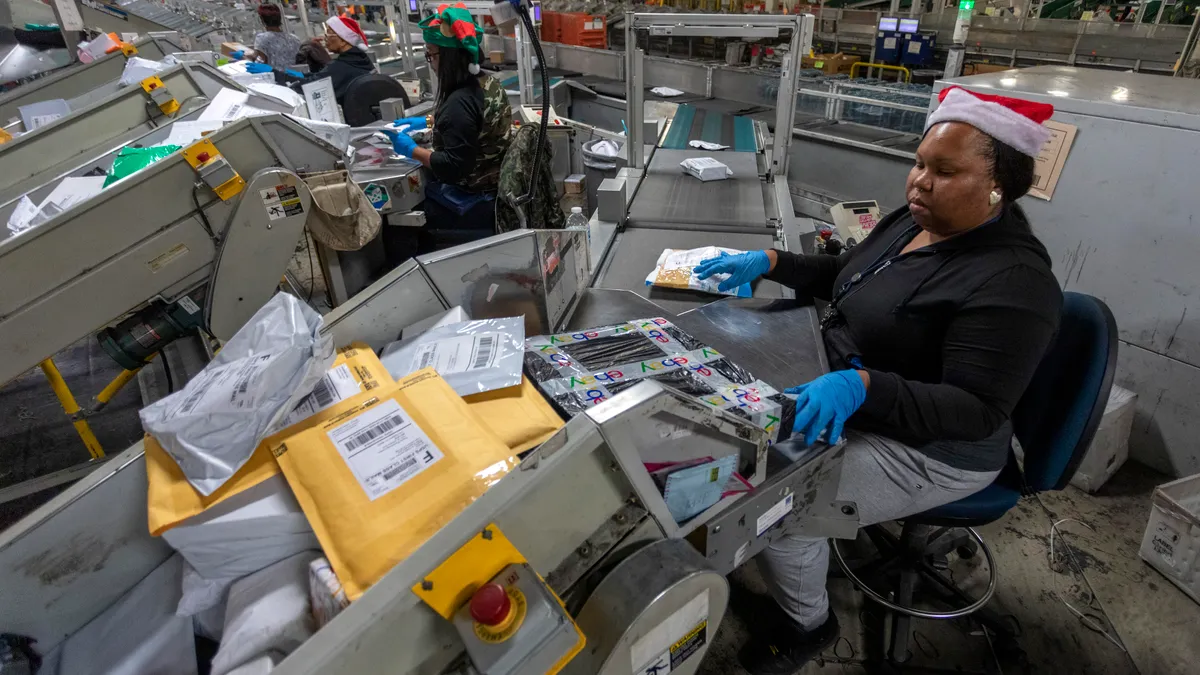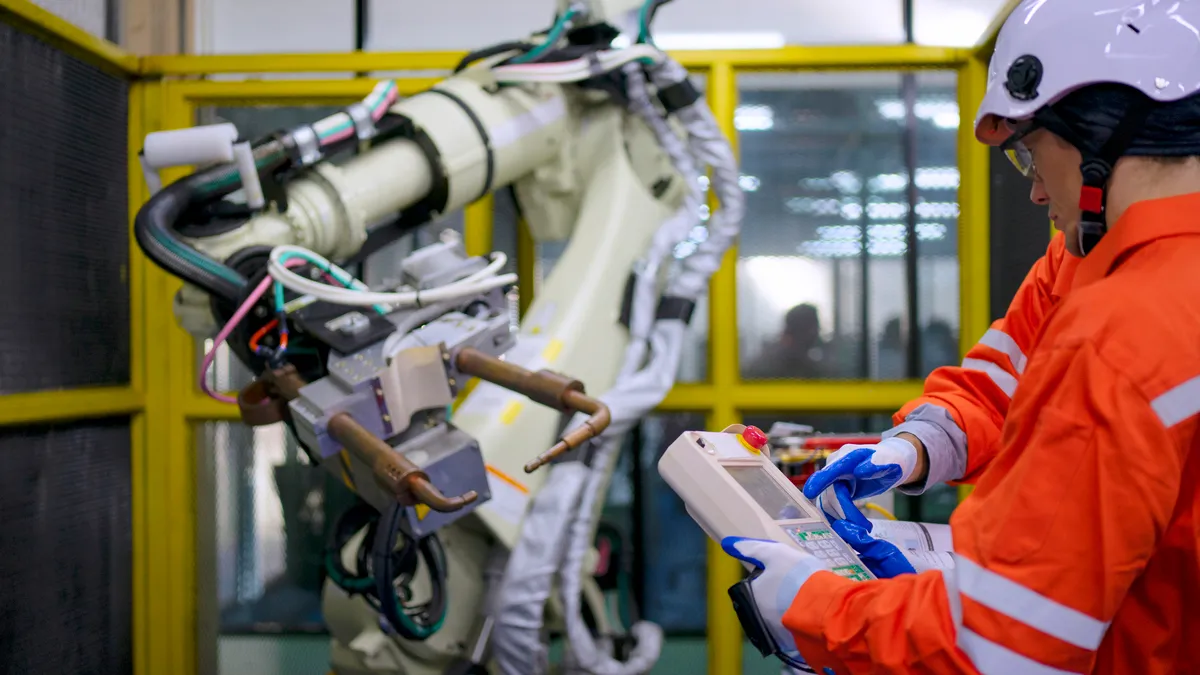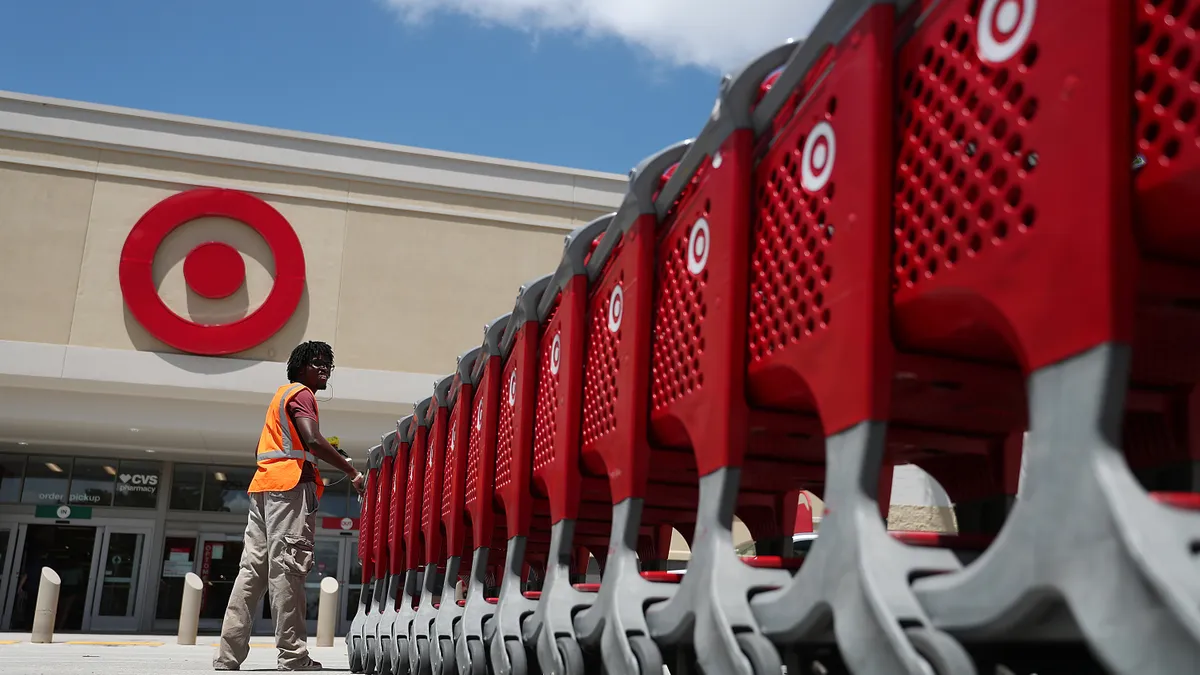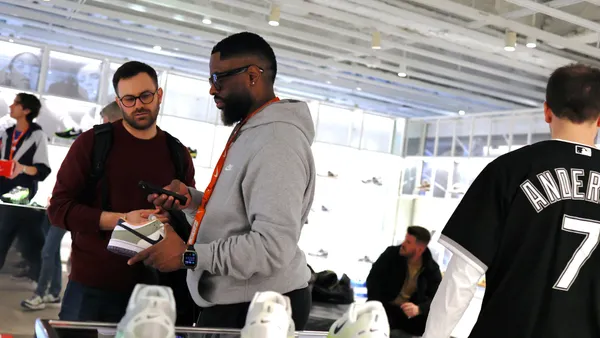Just like every year, an abundance of retail jobs will be open this holiday. But, this time around, there might not be enough workers rushing to fill them.
With a competitive job market threatening to bleed through the hectic holiday shopping season, retailers are now taking extra measures to lure in potential candidates and keep their existing ones. Walgreens Boots Alliance and CVS plan to raise their minimum hourly wage to $15, and Costco raised pay to $16 earlier this year. Amazon is offering sign-on bonuses up to $3,000 and healthcare benefits to some candidates, while Kohl's is giving associates a $100 to $400 bonus for working during the holiday season.
Only a few years ago, some of these tactics might have been unheard of, but several factors remain that prevent these tactics from working, experts said.
"If you have a job market where employers are struggling to find workers, where openings are so high, then you absolutely get into a situation where the balance of power shifts over, to the employee," Mark Mathews, vice president of research development and industry analysis at the National Retail Federation, said. "As employers get desperate to add people, they add more benefits and more pay."
The Bureau of Labor Statistics said the number of job openings in the retail industry reached 1.2 million in July with about 906,000 hires. The unemployment rate in retail is at 6.5% as of August, compared to 6.4% in July, 6.6% in June and 7.3% in May.
"There are shortages across a number of different industries, so everybody's competing to get people to come back to work."

Mark Mathews
Vice President of Research Development and Industry Analysis at the National Retail Federation
Exacerbating the worker shortage is the upcoming surge in retail sales this holiday season. A recent estimate from Deloitte expects retail sales to jump 7% to 9% this year. Total sales could hit $1.3 trillion, the report indicates.
"We are running at incredibly high levels of job openings right now," Mathews said. "Remember that this is not just about the retail industry. There are shortages across a number of different industries, so everybody's competing to get people to come back to work."
In preparation, Walmart said it wants to hire 20,000 supply chain associates and about 150,000 store associates to make holiday shopping run as smoothly as possible. Amazon announced plans to hire 125,000 fulfillment and transportation employees with average starting wages of $18 per hour. Target said it's looking to add about 100,000 seasonal associates, and Dick's Sporting Goods wants to hire about 10,000.
Employment incentives like higher wages may soon trickle down across other industries and retailers as they compete with market leaders for workers, said Evan Armstrong, vice president of workforce policy at the Retail Industry Leaders Association. "If you're a worker right now, you certainly can be demanding, and I think retailers are responding to that."
The challenge of attracting workers
Pairing open positions with unemployed workers is proving to be a slow and difficult process as the economy reopens. Hiring workers in an industry which historically already has high turnover rates is even more challenging now, with the delta variant making retail jobs hazardous.
Retail store workers are especially vulnerable to COVID-19. Roles that have direct contact with customers are five times more likely to test positive, a study published last year in the journal Occupational and Environmental Medicine found. In the study, which analyzed the infection rate among retail workers at a single store in the U.S., researchers found that 20% of the workers tested positive, and most were asymptomatic.
A Costco at Yakima, Washington, had a COVID outbreak which led to 177 workers testing positive for COVID-19 between December 11 last year and January 2. And in April last year, a number of employees at a Whole Foods near Washington's Logan Circle expressed concern after six workers contracted the virus, WUSA reported.
"Something that is not changing as much as we hoped is the fear of COVID because delta is unfortunately still with us and will likely remain with us for a while, so those people who are especially concerned about getting infected, which are probably more older workers in general, still have reasons to be worried," said Gad Levanon, head of the Labor Market Institute at the Conference Board.
Levanon added that the fear of getting the virus has caused some retail workers to be wary of continuing to work in a customer-facing environment. "The demand for those workers is increasing rapidly, and on the other hand, the supply of those workers is very constrained."
In July alone, 678,000 retail workers quit their jobs, up from 524,000 around the same time last year, the Bureau of Labor Statistics indicates. Apart from safety concerns, COVID also forced some schools to close, which kept some parents from working to tend to their children. In addition, some argue enhanced unemployment benefits may have incentivized staying unemployed for longer periods.
"It's not exclusively about wages. Wages are a classic lever that employers pull when they face a labor shortage, but it doesn't seem to be getting the job done entirely in this environment."

Andrew Challenger
Senior Vice President of Challenger, Gray & Christmas
"Quit rates are very much connected to how tight the labor market is," Levanon said. "In a very hot labor market, higher quit rates are part of the game."
Additionally, thanks to the e-commerce boom, a good chunk of the retail jobs opening are supply chain roles, which require a vastly different skill set than store associates and can prevent some applicants from applying. For instance, Target's job post indicates that specialty sales store associates are required to have a welcoming and helpful attitude and communication skills, while warehouse operations associates must be able to lift products weighing up to 60 pounds and operate computer systems.
"These companies are willing to pay for the amount of training because they're trying so hard to hire people. But that's a difficult hurdle for Americans who have worked their whole lives in retail and are now being asked to do something entirely different," Andrew Challenger, senior vice president of Challenger, Gray & Christmas, said.
Challenger also said the geographical shift of where jobs are located, from brick-and-mortar locations in small cities to warehouses closer to metropolitan areas, has created a mismatch.
The 'worker's market'
With the abundance of open positions and attractive offers for workers to choose from, retailers have come up with creative methods in an attempt to attract new workers and keep the ones they already have.
"It's definitely a worker's market," Challenger said.
Several major retailers across the board have hiked wages, announced bonuses and even provided compensation to workers who choose to get vaccinated. But Challenger and other experts said higher paychecks might not be enough to address other issues stopping workers from filling empty spots.
"It's not exclusively about wages. Wages are a classic lever that employers pull when they face a labor shortage, but it doesn't seem to be getting the job done entirely in this environment," Challenger said. "I think smart employers right now are focusing on making their jobs attractive in ways that aren't just about the numbers."
Retailers, it seems, have been paying close attention to these trends too.
Supermarket chain Hy-Vee announced plans to offer child care assistance to eligible employees last month, as some parents struggle to return to work. Walmart, Amazon and Target are offering college tuition assistance to their employees. Sam's Club said it is investing in positions, such as team leads, to encourage workers to develop long-term careers and "climb the ladder."
Challenger said employers should also keep tabs on the changing nature of work and ways in which they can adapt flexibility and autonomy into lower-paid roles if they want to de-escalate turnover rates.
"I think the mood of a lot of workers is one of like we're on our last nerve with all this."

Adam Ryan
Liason for Target Workers Unite and a worker at Target
Target Workers Unite is an independent initiative run by Target team members that has been pushing for changes in their work environment such as adopting more training, stable hours and access to healthcare. Most recently, Target Workers Unite has been vocal about its desire for hazard pay and a union through a petition.
"[Employers] are trying to offer the most bare minimum possible to try to entice people in without actually having to give up a significant portion of the wealth that they're producing back to the workers," said Adam Ryan, liaison for Target Workers Unite and a worker at Target.
Ryan said that workers at his store typically quit due to unstable scheduling, but those that stayed have had to deal with customers that refuse to follow COVID protocols and have been feeling stretched thin due to the workload. He said they are "cross-trained," which means the company expects them to work in multiple departments in addition to their primary one.
"There's that additional mental health toll that we're having to deal with like disrespectful customers. That's always been the feature of working in retail and customer service but it just seems like it's been amplified," Ryan said. "I think the mood of a lot of workers is one of like we're on our last nerve with all this."
Target declined to respond to requests for comment regarding the Target Workers Unite petition.
An employee base to meet demand
Now that federal unemployment benefits offered through the American Rescue Plan Act and the eviction moratorium have ended (in some states), some industry experts believe this will push more retail workers to return to work sooner. The program gave an extra $300 a week to jobless Americans, and the moratorium protects tenants from being evicted for not paying rent.
"Between the unemployment benefits and the eviction moratorium... a lot of people can do what we call 'stop out' of the workforce and still make their ends meet," said Sucharita Kodali, retail analyst at Forrester. Once workers have "less of a safety net, they will be forced to go back into the workforce."
But in the meantime, consumers aren't letting up, with 55.9% saying jobs are "plentiful," according to The Conference Board Consumer Confidence Index in September. Only 13.4% said jobs are "hard to get."
"What that says to me is that working conditions, and that includes pay, aren't adequate to keep workers at their jobs."

Ben Zipperer
Economist at the Economic Policy Institute
Though losing unemployment benefits may cause unemployed Americans to search harder for a job, Ben Zipperer, economist at the Economic Policy Institute, said they might not take open positions as soon as retailers hope, even with higher compensation.
"We're seeing workers quit their jobs at very high rates in the retail industry — higher than what was the case before the pandemic," he said. "What that says to me is that working conditions, and that includes pay, aren't adequate to keep workers at their jobs."
Constantly having to replace workers can be expensive due to the loss of productivity in addition to the recruitment and training process involved, experts said.
NRF's Mathews said that the retail industry has yet to see whether the labor shortage will impact companies financially. But as deep-pocketed consumers shop this holiday, some retailers worry whether they can cater to this demand, he added.
"The last thing you want as a retailer is to miss out on a sale," Mathews said. "The challenge this holiday is to keep their shelves stocked and to make sure that you have the employee base to meet that demand, especially as we move rapidly toward the Black Friday weekend."
Though experts remain hopeful that employment levels will return to normal, many aren't sure whether retailers will continue to evaluate and recalibrate the incentives they give to workers in the long run. Mathews said that as millions of baby boomers leave the workforce every year, normalcy may take a while.
Retailers are throwing a variety of solutions at the problem. "You're going to learn in three to six months what worked and what didn't work," he said. "Right now, the best retailers [can do] is to make sure that they leave no stone unturned and to try everything."














![Salesforce AI's CEO sits onstage across from Cristina Criddle. Screens that say Human[X] hang behind them.](https://imgproxy.divecdn.com/J71WpXWHjr8jmbCw_PX7Cp2YH7Pmo8dP66Pz0SEPfw4/g:nowe:0:104/c:1024:578/rs:fill:1200:675:1/Z3M6Ly9kaXZlc2l0ZS1zdG9yYWdlL2RpdmVpbWFnZS9HZXR0eUltYWdlcy0yMjA0NjUxNDM0LmpwZw==.webp)






